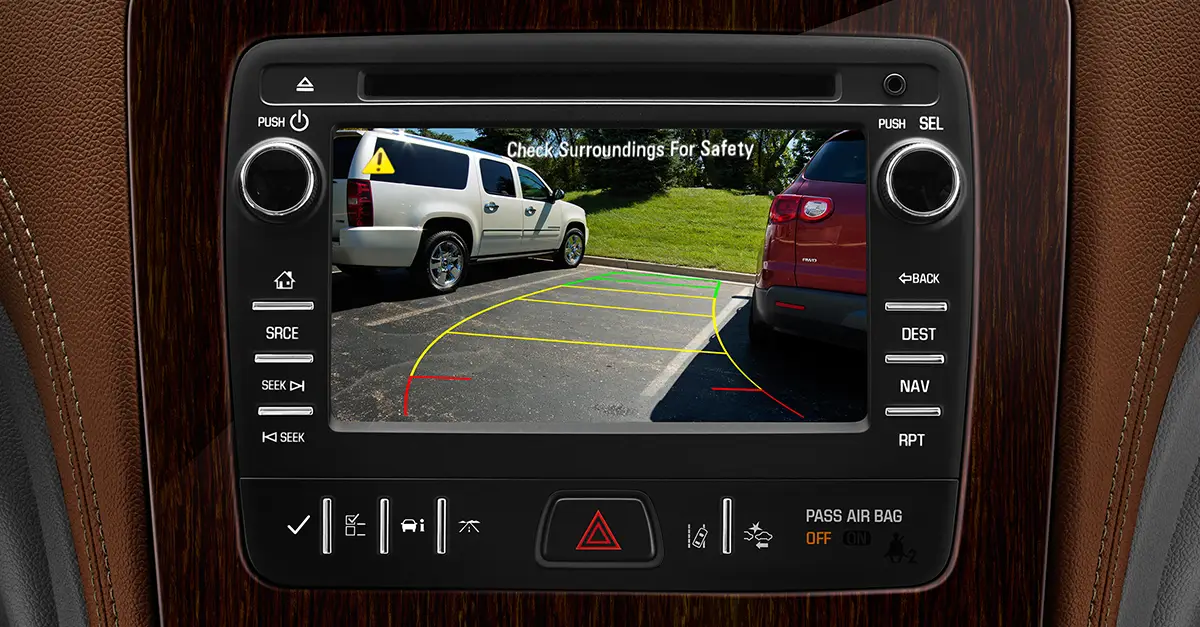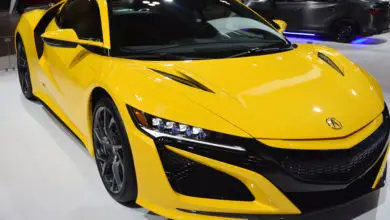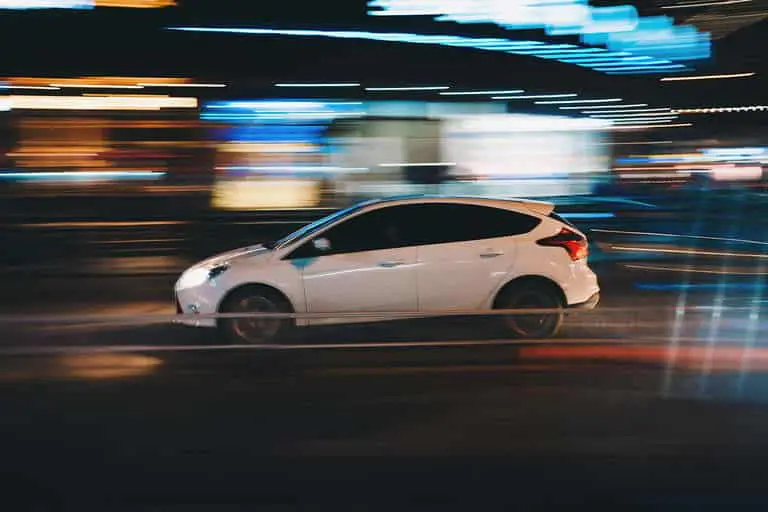Car Safety Features in 2020
Deprecated: preg_split(): Passing null to parameter #3 ($limit) of type int is deprecated in /www/conquestvip_483/public/wp-content/themes/jannah/framework/functions/post-functions.php on line 871

A big selling feature that has always been intrinsically linked to the value of a car is the safety and reliability that they can provide to the driver.
Technology makes it increasingly easier to overcome the problems that arise when you take the steering wheel, and today we present you the solutions that have proven to be the most effective in recent times. Without further ado, these are the best safety features in new cars.
Active Suspension
Computer systems have allowed a change in the way in which the rolling of the vehicles is damped, discarding the uncontrollable passive suspension of shock absorbers by an active system. This consists of a series of sensors that send adaptive signals to a central computer that is in charge of regulating in the best way possible, the stability of the car, altering by hydraulic or pneumatic systems the behaviour of the wheels with respect to the road. In this way, the instabilities in the surface of the roadway are evaluated before they reach the tires, preventing it from being perceived by its occupants.
However, even today this system represents a very high expense in the manufacture of vehicles, so it has only been implemented in higher-class models or in experimental cases. But still, we can name a few examples, such as the Ford Mustang-GT350, Chevrolet Camaro-SS or the Porsche 991.
Blind Spot Detection
The infamous blind spot is one of the greatest adversities that rear-view mirror systems have not been able to solve. This is basically the area that escapes the field of view of the driver and that is usually located near the trunk of the vehicle. Blind spot detection systems are one of the best car safety features in modern vehicles.
This angle is especially dangerous when changing lanes, as there could be another vehicle right where you cannot see it. However, an affordable solution that has been proven to work, is the placement of sensors where this problem occurs, which light up an icon on the board to warn the driver in case there is any danger.
Almost all car manufacturers already implement this security system in their series vehicles, although they warn that it is not yet a replacement for a regular check of the mirrors and a look over your shoulders.
If you’re considering a new vehicle that has these safety features, use check out the best deals in Ontario this month.
Brake-Assist System
The Brake-Assist System (BAS), will help the driver when braking in a situation of emergency, telling the whole vehicle to take control over the brake and apply the power required to avoid an accident. In conjunction with the ABS system that regulates the force with which the brakes stop the wheels, it will detect if the car is in an emergency situation by analysing the driver’s behaviour (the time that takes the user to let go of the accelerator and step on the brake). And if this is the case, the system will perform a brake with maximum power and without needing the driver’s input.
The first cars with this type of technology were introduced by Mercedes-Benz in its S-Class and SL-Class models. Now, most vehicles come standard with this car safety feature. A similar system is the one implemented by Volvo, which uses radars and detects if a collision is imminent, braking automatically if that’s the case.
Lane Change Assist
Changing lanes unconsciously can end in a catastrophic accident if it’s not prevented. The solution that modern technology provides for this issue is simple, but can be expensive depending on the option used. Basically, a set of sensors detects the white lines of the asphalt road. If for any reason the vehicle steps on one of these without having activated the dipped beam previously, it will emit a signal to warn the driver.
These sensors range from infrared systems to cameras. It’s also worth mentioning that the most expensive ones implement advanced laser scanners. Some models that include this technology are the Toyota vehicles, such as the Corolla 2018, the Avalon 2018, or the Camry 2018.
Traffic-sign Recognition
In a similar fashion to the change lane assist system, this feature is implemented for situations where the driver could have skipped an important traffic-sign due to fatigue or negligence.
Using a camera system integrated in the front of the vehicle, the computer analyses the universal patterns of traffic signals, which prompts the vehicle to react passively (indicating to the driver if it has committed a fault) or actively (in the case of speed limit signs, the vehicle could decrease it automatically if the driver does not).
The system is still in a premature state. In 2008 was partially implemented in the BMW 7-series and in the Mercedes-Benz S-Class to recognize speed limit signs. Subsequently, in the Volkswagen Phaeton 2011 was improved by adding new recognizable patterns.
Self-parking
One of the most complicated and fundamental processes that comes with driving is the mere action of parking. Properly parking often requires complicate manoeuvres and total control of the space, especially when parking in parallel or in reverse.
Currently, vehicles can take care of this process with the least human intervention. Depending again on a set of sensors (this time operating at low speed), the vehicle scans its surroundings and takes control of the steering wheel, analysing every change that occurs until it is in the position determined by the system.
This technology is already being implemented in many affordable ranges of vehicles as an optional package, among which we can mention the Citroën C3 Aircross, the Audi A3 Sportback, or even the new Ford Fiesta.
Forward Collision Warning & Autonomous Emergency Braking
FCW employs a mechanism similar to the one used by self-parking systems. Through a series of sensors on the four sides of the vehicle, a safe distance is created between the elements of the environment. In response, if this environment is penetrated, and is within the possibilities of the car, it will correct its trajectory to avoid possible collisions. This system does not stop the vehicle but rather informs the driver in advance.
However, this mechanism has been slowly displaced by the AEB system (Autonomous-Emergency Braking), which will stop the vehicle without the driver’s intervention, being more precise when it comes to determining emergencies. Depending on the company, it will have a different name, but the system is expected to be standardized on all cars sold in 2022.
Check out this article from Car and Driver for the top safest vehicles with these safety features.
Dash Cams
Dashcams are specialized cameras that go mounted on your car’s dashboard, they record on video everything that happens in front of the windshield. Dashcams typically record small snippets of footage in critical moments that can be later playback and examined. Their usage is becoming widespread in both America and Europe, and although dashcams are forbidden in countries like Austria or Switzerland, their usage is actually mandatory in countries like Russia.
Their usefulness stems from the fact that they can provide evidence to the court or your insurance company in case of a sinister. Having that extra layer of security is always worth it, that’s the reason why the Dashcam market is thriving right now.
A prime example that I can personally vouch for, is the Garmin Dash-Cam 55. This model became one of the best mid-range solutions of 2018 and for good reasons, it features 1440p recording at 30fps, a compact size to place it anywhere, voice control and other security functions like forward collision and lane departure warnings. It also comes with built-in GPS to tag the time and place into the footage taken.
Nonetheless, there are certainly many other options out there, and although I haven’t tried them all by myself, many reviewers speak highly of the Thinkware F800, which features a non-intrusive design alongside cloud services, and even Time-Lapse Mode that records your car for 48 hours when parked.
Backup Cameras
Also called reversing cameras, these are visual assistants for drivers when moving the vehicle in reverse. This safety feature is standard in most 2019 cars and SUV’s. In some cases, these are a good alternative to blind-spot detection. This type of cameras also come with special features, such as wide-angle lenses and horizontal mirror video output to be similar to what is seen in the actual mirrors of the car.
Its use began to become popular thanks to vehicles where moving in reverse was complicated, like big trucks, but little by little it has made its way to mainstream cars series. They can be purchased in stores as add-ons in a similar way to dashcams, but there are also models with this feature built-in, such as the Ford Fiesta-Titanium, the Honda Fit, the Mitsubishi Lancer or the Mazda Mazda3 iTouring.
Self-Driving Cars, Because The Future Is Now
The most cutting-edge technology of all is the mixture of each of the aforementioned features taken to a higher level. The autonomous vehicle is the ultimate goal, and it is getting closer and closer. Through the use of radars, lasers, GPS and computer vision, the vehicle has total awareness of its environment and is capable of driving without the help of a human.
https://www.youtube.com/watch?v=06T6pg36Fxc
However, in the present day there are still many problems concerning the reliability that these systems will offer when they go on mass production, so for now, only prototypes or specific models feature this technology.
The clearest and most tangible example at the moment comes from Waymo (formerly known as Google’s self-driving car project), a brand that managed to introduce in America a taxi that is operated entirely autonomously. Other options are the Audi A8, whose manufacturer has indicated that it would work as long as they do not exceed 37mph (59.5kph) and Tesla, who is pushing for the development and adoption of the technology in a near future.
Wired has a great article on the history of self driving cars here.
One Step Closer To The Future
Each of these car safety features only represents a small piece of the puzzle of achieving ultimate safety when driving. In the end, the goal is that traffic accidents are completely eradicated, either by eliminating the human factor or by improving the perception of the driver.
And judging by the results so far, it is most likely that this solution will arrive in the next decades, or at least we like to think so.

















